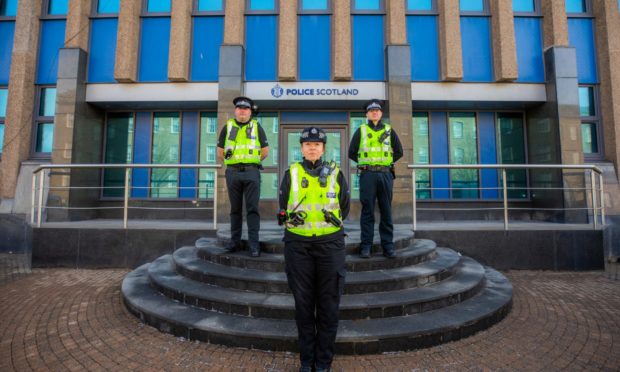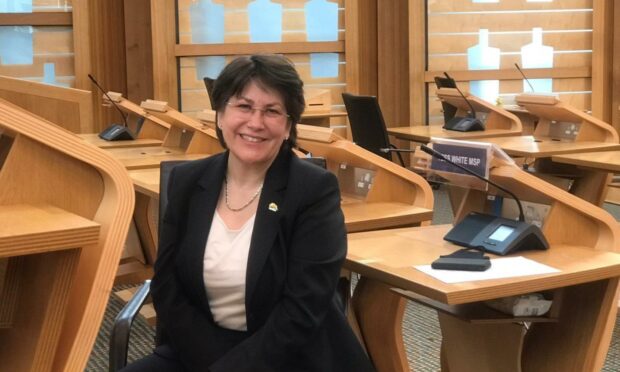Tayside was the hardest hit local police division in Scotland last year as hundreds of officers from across the country were diverted to national teams.
New figures show the force in Angus, Dundee and Perth and Kinross lost 68 officers in a year, or 6.8% of the total – the largest proportional decrease in the country.
The Tayside division had reached a high of 1,000 officers at the start of the pandemic in March 2020, but it had fallen to 932 by the same month this year, which was the lowest local headcount in the region of any year since the national force was created in 2013.
All 13 local divisions across Scotland shrunk last year, with 521 officers leaving in total, while at the same time the ranks of national units were swollen by 360 personnel.
National teams include those investigating organised crime, cybercrime, and the abuse of children and vulnerable people.
Flexible response unit
In 2019, the force also established the flexible response unit, which had 300 officers last year but is now understood to be down to about 225.
It has been used to enforce coronavirus lockdown rules, as well as respond to football disorder and climate protests.
Calum Steele, general secretary of the Scottish Police Federation, said: “Local policing officers have long since been the poor relation in policing.
“Whenever any new demand is created or identified by the service, the first place that resources are removed from is the local policing response.
Whenever any new demand is created or identified by the service, the first place that resources are removed from is the local policing response.”
“That leaves the officers that are left working longer and harder, in more dangerous environments, and the community at large receiving a poorer overall service.”
Under the Police Scotland structure, officer posts are split over three tiers – local, regional and national – with the 13 local divisions supported by specialist teams that operate across the country.
In Tayside, there were 1,000 officers in March 2020 but that fell to 932 a year later, while in Fife the headcount at the local division dropped from 802 to 774.
The north-east division, meanwhile, was reduced in size by 34 officers, while in the Highlands and Islands there was a decrease of 11.
Of the regional commands, the “north” area – which includes Tayside, the north-east and the Highlands and islands – was the only one of three to shrink in size last year, going from 637 officers to 609.
The “east” area added 19 officers to its ranks, while there was an increase of 10 in the “west”.
The national teams, meanwhile, increased in size from 1,596 to 1,956.
Across the country, there were 17,283 full-time equivalent (FTE) police officers in March this year, which was down by 148 FTE officers, on the same month in 2020.
Tess White, Scottish Conservative MSP for north-east Scotland, said: “There are fewer officers on the beat in the north-east than there were in 2013, while violent crime has increased.
“That is a trend that must be reversed immediately.
“A Local Policing Act will ensure more police are patrolling our streets in the north-east, will give communities more of a say in policing decisions, and guarantee proper investment in supporting our officers.”
‘Frontline policing is changing’
Deputy Chief Constable Will Kerr said: “Frontline policing is changing and goes beyond the uniformed officers on the street that the public will see, with the growing range of online threats becoming a bigger part of our policing response every day.
“Officers from our national specialist units also work in less visible, but no less vital, frontline roles which protect local communities, such as preventing and investigating serious and organised crime, cybercrime, and the abuse of children and vulnerable people. Each one of these crimes takes place in a local community or home.
“In addition, our flexible response unit has been established to provide vital support to local policing divisions and has assisted with a range of spontaneous incidents, supported football matches and associated disorder, mobilised for protest and demonstrations in addition to supporting proactive policing including road checks and tackling anti-social behaviour.”

